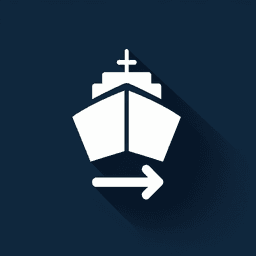
Starboard Side: Definition and Examples in Nautical Terms
January 16, 2025
Starboard Side
The term "starboard side" refers to the right-hand side of a vessel when one is facing forward towards the bow. This nautical term is crucial for navigation and communication at sea, ensuring clarity and safety in maritime operations.
Historically, the term "starboard" is derived from the Old English word "steorbord," which means the side on which the ship is steered. In ancient times, ships were steered with a steering oar on the right side, as most sailors were right-handed, leading to the term "starboard."
In modern maritime practice, the starboard side is marked by green navigation lights, distinguishing it from the port side, which is marked by red lights. This color-coding is essential for preventing collisions, as it helps sailors determine the direction a vessel is moving, especially at night or in poor visibility conditions.
Understanding the starboard side is fundamental for sailors, as it plays a critical role in various maritime rules and conventions, such as the "right of way" rules, where a vessel on the starboard tack has priority over one on the port tack.
In summary, the starboard side is a key concept in maritime navigation, deeply rooted in nautical tradition and essential for safe and effective seafaring.
Understanding the Starboard Side
The starboard side of a vessel is a fundamental concept in maritime navigation and operations. It refers to the right-hand side of a ship or boat when facing forward, towards the bow. This term is crucial for ensuring clear communication and safety at sea.
Why is it Called Starboard?
The term 'starboard' originates from the Old English word 'steorbord,' which means the side on which the ship is steered. Historically, ships were steered using a steering oar on the right side, hence the name.
Starboard vs. Port
In maritime terminology, the opposite of starboard is port, which refers to the left-hand side of the vessel when facing forward. This distinction is vital for navigation, docking, and avoiding collisions.
Importance of Starboard in Navigation
Understanding the starboard side is essential for maritime navigation. It helps in determining the right of way, especially in crowded waters. According to international maritime rules, when two vessels meet, the vessel on the starboard side has the right of way.
Common Questions About the Starboard Side
- What color is the starboard light? The starboard side is marked by a green navigation light, which helps in identifying the vessel's orientation at night.
- How do you remember starboard and port? A common mnemonic is 'Port and Left both have four letters,' helping to remember that port is the left side.
- What is the starboard side rule? The vessel which has the wind on its starboard (right) side has the right of way. The vessel which has the wind on its port (left) side must give way. When both boats have the wind on the same side, the windward (upwind) boat has to give way.
- How do I remember port or starboard? Memorization tips include color association, such as "there is no red port left in the bottle," associating red with the left (port) side, while green naturally falls to starboard.




